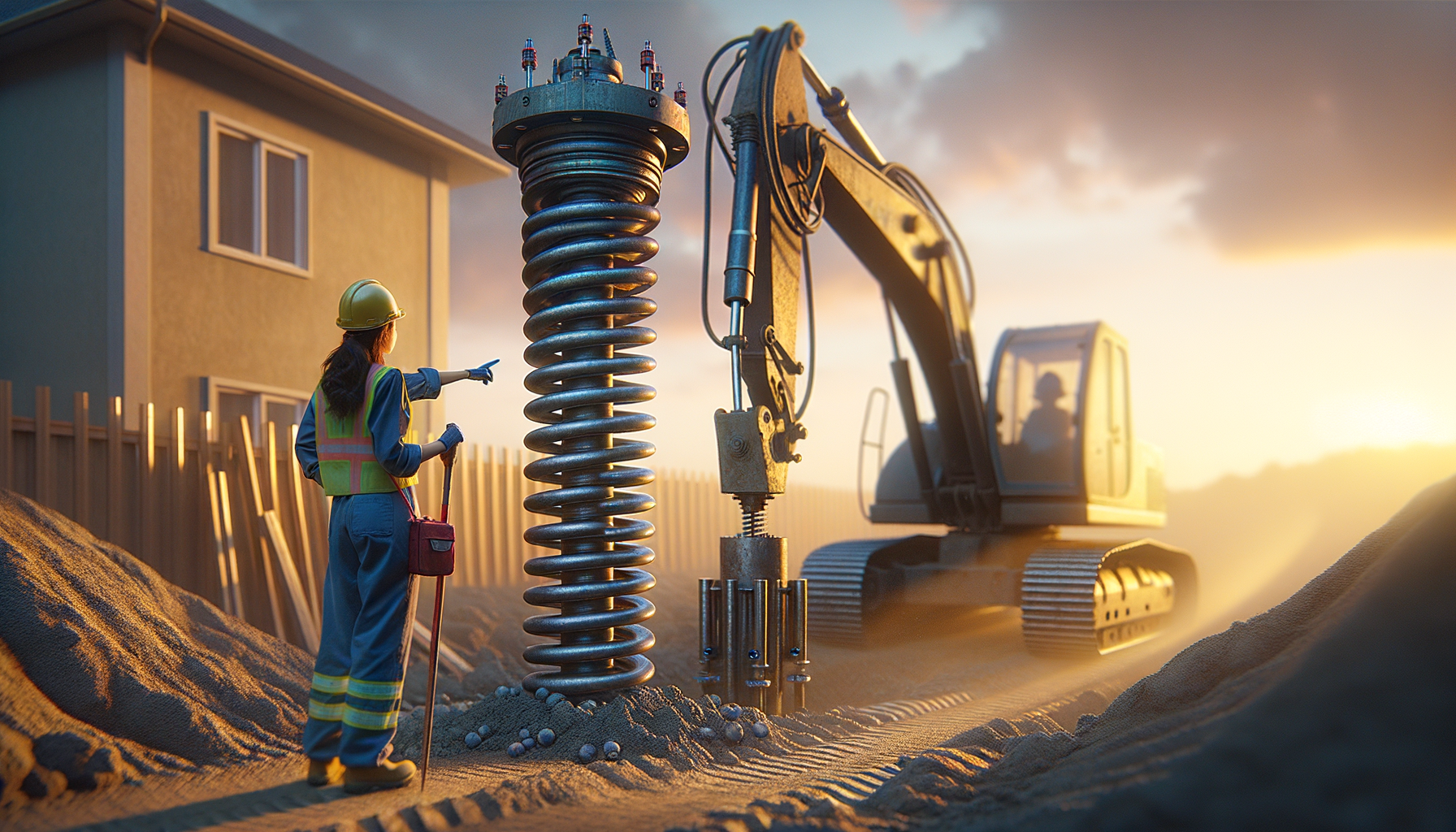What Are Helical Piers?
- Definition: Helical piers, also called screw piles, are strong steel rods with spiral plates that help support buildings. They act like big screws and go deep into the ground to keep things steady.
- Parts:
- Shaft: This is the main long part that goes into the ground.
- Helical Plates: These are the spiral plates on the shaft that twist into the soil to hold it firm.
Why Use Helical Piers for Foundation Repair?
- Works in Different Soils: Helical piers work well in many types of soil, whether it’s hard or soft.
- Strong Support: They can hold a lot of weight, which makes them good for houses and big buildings.
- Quick to Install: Putting in helical piers is fast and doesn’t mess up your yard much.
- Saves Money: They need less digging than other methods, which can be cheaper.
Signs Your Foundation Needs Helical Piers
- Cracks in Walls: Look for cracks going up and down or side to side in your walls.
- Uneven Floors: If your floors are sloping or sagging, your foundation might be sinking.
- Stuck Doors and Windows: If doors or windows don’t open easily, the foundation might have shifted.
- Gaps in Walls: If you see spaces between your walls and the ceiling or floor, your foundation might be moving.
Steps in Helical Piers Installation
-
Check the Site
- A structural engineer looks at the soil and figures out where to put the piers.
- Choose the best spots for the piers.
-
Get Ready
- Clear the area and mark where each pier will go.
- Make sure machines can reach the spots.
-
Install the Piers
- Use hydraulic machines to screw the piers into the ground.
- Make sure the piers go deep enough and are strong.
-
Connect to Foundation
- Attach brackets to the piers.
- Lift and level the foundation as needed.
-
Finish Up
- Check that everything is level and secure.
- Fill in any holes and fix the landscaping.
Why Helical Piers Are Better Than Other Methods
- Less Digging: They need less digging, so less mess and lower cost.
- No Major Disruptions: You can usually stay home while the work is done.
- Eco-Friendly: Less soil movement means the environment stays nicer.
- Instant Support: They provide stability right away, making your home safer.
Finding a Good Professional for Helical Piers
- Experience: Pick contractors who have done lots of helical pier work.
- Certifications: They should have proper certifications.
- Reviews: Check what other customers have said about them.
- Warranty: Make sure they offer a good warranty for their work.
Maintenance Tips After Installation
- Regular Checks: Have your foundation checked regularly to make sure it’s stable.
- Manage Water: Make sure water drains away from your house to keep the foundation stable.
- Careful Landscaping: Keep big trees away from your house and make sure the ground slopes away from your foundation.
Common Questions About Helical Piers
- How long do they last?
- Helical piers are made to last as long as your building does.
- Can they be installed in bad weather?
- Yes, they can be installed in almost any weather, but extreme conditions might need special care.
- Are they good for new buildings?
- Yes, helical piers work for both new buildings and repairs.
- How much do they cost?
- The price can be between $1,000 and $3,000 per pier, depending on the project.
- How deep do they go?
- Helical piers can go as deep as 20 to 60 feet, depending on the soil and weight needs.
Knowing about helical piers can help you feel better about fixing foundation problems. These strong and flexible tools can keep your home safe and stable for a long time.


Leave a Reply